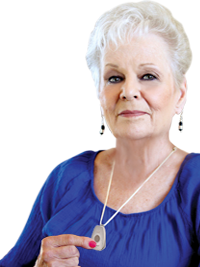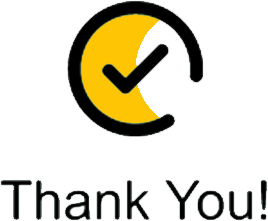Based on an article by Michelle Meadows on the FDA.gov website.
Edited Article by Dr. Don Rose, Writer,
Life Alert
Tips and Facts
- Inform your doctor if paying for prescription drugs is a problem.
- Ask your doctor about generics, another brand of the drug that may cost less, and nonprescription options.
- Generic drugs have exactly the same active ingredients and effects as brand-name drugs, but can cost 30 percent to 80 percent less.
- Many drugstore chains offer their own brands, with identical active ingredients as brand-name drugs, at a lower price. Also, these stores may run periodic deals that save you money (for example, giving a $25 gift card for transferring a prescription).
- Shop around your neighborhood, or legitimate online pharmacies, for the best prices on prescription drugs. Wherever you buy, you can visit local pharmacies to ask questions.
- Find out whether Medicare Prescription Drug Coverage can benefit you and your family.
- The first enrollment period starts on Nov. 15, 2005, and runs through May 15, 2006. For those who don't join a Medicare prescription drug plan by May 15, the monthly premium rises 1 percent a month. If you wait a year to join, the premium would go up 12 percent.
- Check to see whether you are eligible for drug assistance programs in your state.
- Check with the pharmaceutical companies that manufacture your medicines to find out if you qualify for assistance programs.
- The FDA recommends making sure that pharmacists are aware of all products being taken, to avoid drug interactions. These products include prescription and nonprescription drugs, drug samples, herbals, vitamins, and other dietary supplements.
- Whether you shop at local pharmacies or online, the FDA recommends purchasing only from state-licensed pharmacies in the United States. Buying outside of the U.S. entails risks.
Introduction
Many Americans have been buying prescription drugs from foreign countries as a way to cut costs, but experts at the Food and Drug Administration (FDA) warn that this practice comes with potential safety risks. The safety and effectiveness of imported drugs have not been reviewed by the FDA, and their identity and potency can't be assured. Patients could get the wrong drug. Or they could get too little or too much of the right drug. All of these differences can be dangerous.
"When Americans import medicines illegally or buy medicines online from unreliable sources, they are faced with a dangerous buyer-beware situation," says FDA Commissioner Lester Crawford, D.V.M., Ph.D. "The FDA understands why people who are having a hard time paying for prescription drugs might do this. We have been expanding our generic drug program to help make more affordable prescription drugs available. This is one solution that does not put consumers at risk."
The FDA doesn't regulate drug prices, but agency experts recognize that the inability to access needed medication because of high prices is a serious public health issue. For this reason, the FDA has enhanced the process for the review and approval of generic drugs, and has taken steps to eliminate roadblocks that keep generics off the market. In 2004, the FDA approved 413 generic drugs, 320 full approvals and 93 tentative approvals. In 1999, the agency approved 266 generic drugs, 198 and 68, respectively. Tentative approval means that the product meets the FDA's standards, but can't yet be marketed because of existing patents or temporary government restrictions against competing products.
Generic drugs have exactly the same active ingredients and effects as brand-name drugs, but they can cost 30 percent to 80 percent less.
Consumers also can save money on prescription drugs by becoming smart shoppers and knowing what to discuss with their doctor or pharmacist. Having discussions on whether a less expensive drug will work, comparing prices among U.S. pharmacies in the area or online, and finding out about assistance programs and how to qualify can help.
"The FDA also encourages consumers to learn about potential savings through Medicare's outpatient prescription drug coverage," Crawford says. "This new program comes at a time when five out of six people aged 65 and older are taking at least one medication, and almost half of all elderly people take three or more."
Medicare is the national health insurance program for people ages 65 and older and for people of all ages who have certain disabilities. In January 2006, the 43 million people in Medicare will--for the first time--be eligible for prescription drug coverage as part of the Medicare Prescription Drug, Improvement and Modernization Act of 2003 (MMA).
The new coverage will give substantial help to beneficiaries in paying for prescription drugs, regardless of their income or how they pay for health care now, according to Mark McClellan, M.D., Ph.D., Administrator of the Centers for Medicare & Medicaid Services (CMS). "The MMA also gives Medicare the ability to provide additional comprehensive help to those in greatest need--beneficiaries with very high prescription drug costs and people with low incomes," he says. On average, people with limited incomes who qualify for extra help will save about 95 percent on prescription drug costs, according to CMS spokesman Gary Karr.
Medicare has offered discount drug cards since June 2004 as a temporary measure until the Medicare benefit begins in January. The cards have made possible a discount of 10 percent to 25 percent off regular prescription drug prices. Older people with low incomes who used the cards received an additional credit of $600 in 2004 and again in 2005. As of June 2005, 6.5 million people had signed up for the discount drug cards, including 1.8 million who also received the $600 credit.
All across the country, health care professionals, government agencies, and community organizations have been working together to help Americans take advantage of the new Medicare benefits. For example, in 2004, the Access to Benefits Coalition (ABC), a network of more than 90 nonprofit organizations, was created to help Medicare beneficiaries make the best use of all available resources for lowering prescription drug costs. Those resources include prescription drug coverage through Medicare, state-sponsored programs, and patient assistance programs (PAPs) from pharmaceutical companies.
Generic Drugs
In 2004, the average price of a generic prescription drug was $28.74, while the average price of a brand-name prescription drug was $96.01, according to the National Association of Chain Drug Stores.
NDCHealth, which collects data on the pharmaceutical industry, says that in 2004 the average community retail price for brand angiotensin-converting enzyme (ACE) inhibitors was $55.84, compared with $27.75 for generic products; the average price for brand beta blockers was $41.39, compared with $18.84 for generics; the price for brand calcium channel blockers was $66.06 versus $47.40 for generics; and the price for brand potassium-sparing diuretics was $34.27, compared with $16.25 for generics. The comparisons of these blood pressure medications included similar dosing, numbers of pills and strength of prescription.
Patent protection gives brand-name manufacturers the right to be the sole source of a drug for a certain time period so they can recoup the money they invested in trying to develop the product. Once the patent protection expires, a generic version of the drug can be marketed.
"Many see generics as the only way they can afford prescription drugs," says Gary Buehler, R.Ph., Director of the FDA's Office of Generic Drugs. "Still, there are some people who doubt generics because they think that anything that costs more must be better. But the reason generic manufacturers can sell the drugs less expensively is not because the quality is lower. It's because there is competition among these generic manufacturers, who don't have to repeat the expensive safety and effectiveness testing that brand companies have already conducted." For a number of years, the FDA has been increasing public awareness and confidence in generic drugs.
Generic drug companies must perform tests and show the FDA that their drugs are equivalent in terms of therapeutic effect to the brand-name drug. These companies must show that the ingredients of the generic drug enter into the blood stream in the same way and in the same length of time as the brand-name drug.
As of June 2005, there were 11,167 drugs listed in the FDA's Orange Book, and about 8,400 had generic counterparts. The Orange Book, which is accessible online at
www.fda.gov/cder/ob/, lists approved drug products with therapeutic equivalence evaluations.
Physicians and patients should discuss which drug is the best therapy. Even when a particular branded drug has no generic, a very similar member of the same drug class may be available. For this reason, instead of asking doctors whether a particular brand-name drug has a generic version, patients should ask whether there is a generic available to treat their problem, suggests Jack Billi, M.D., associate vice president for medical affairs at the University of Michigan. "Patients should ask if there is a generic in the class of drugs they are taking," he says.
For people who have insurance that pays for drugs, use of generics can make a big difference, Billi says. "Tiered co-payment structures through insurance plans encourage the use of generics," he says. "For example, there might be a copay of seven dollars for generics and 14 dollars for brand drugs."
"Even if you have a fixed copay," Billi says, "choosing generics saves your employer money, and that makes it more likely the employer will continue offering coverage. And if you don't have health insurance and you're paying out-of-pocket, generics will bring you big savings."
For more on the FDA's generic drug education program for consumers, visit www.fda.gov/cder/consumerinfo/generic_text.htm
For more information about Life Alert and its many services and benefits for seniors nationwide, please visit the following websites:
http://www.lifealert.com
http://www.seniorprotection.com
http://www.911seniors.com/






